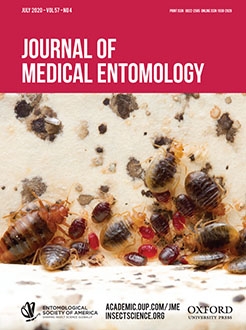Aedes aegypti (L.) (Diptera: Culicidae) is a diurnal feeder that lives in close association with human populations. It is the principal vector of yellow fever, dengue fever and the Zika Virus. Issues of arboviral diseases have been on the ascendency in most countries including Ghana where Aedes mosquito is the main vector of yellow fever. A comparative study of the biting behavior of Ae. aegypti and the identification of subspecies were undertaken using molecular technique. Standard human landing technique was used to collect both indoor and outdoor biting mosquitoes at three zones located in the Upper East (Bolgatanga), Upper West (Nadowli), and Northern (Damongo) Regions of Ghana during the dry and rainy seasons between 0600 and 1800 Greenwich Mean Time (GMT). All collected mosquitoes were identified morphologically using taxonomic keys. random amplified polymorphic DNA polymerase chain reaction was used to categorize Ae. aegypti into subspecies. Adult female Aedes mosquitoes identified formed 62% (n = 1,206) of all female mosquitoes collected. Aedes aegypti 98% and Aedes vittatus 2% were the only Aedes species identified. Bolgatanga recorded the largest number of Ae. aegypti 42%, whereas Nadowli 22% recorded the least. Aedes vittatus was observed in Nadowli. Aedes aegypti exhibited a bimodal biting behavior peaking at 0600–0800 GMT and 1500–1600 h GMT. Molecular findings revealed 69% Ae. aegypti aegypti and 31% Ae. aegypti formosus as the two subspecies (n = 110). This information is important for implementing effective vector control programs in the three regions of the northern Ghana.
How to translate text using browser tools
29 February 2020
Biting Behavior and Molecular Identification of Aedes aegypti (Diptera: Culicidae) Subspecies in Some Selected Recent Yellow Fever Outbreak Communities in Northern Ghana
Millicent Captain-Esoah,
Philip Kweku Baidoo,
Kwadwo K. Frempong,
Delphina Adabie-Gomez,
Joseph Chabi,
Dorothy Obuobi,
Godwin Kwame Amlalo,
Francis Balungnaa Veriegh,
Martin Donkor,
Victor Asoala,
Eric Behene,
Daniel Adjei Boakye,
Samuel Kweku Dadzie
ACCESS THE FULL ARTICLE
It is not available for individual sale.
This article is only available to subscribers.
It is not available for individual sale.
It is not available for individual sale.

Journal of Medical Entomology
Vol. 57 • No. 4
July 2020
Vol. 57 • No. 4
July 2020
Aedes aegypti
biting behavior
molecular identification
Northern Ghana
Yellow Fever Outbreak




